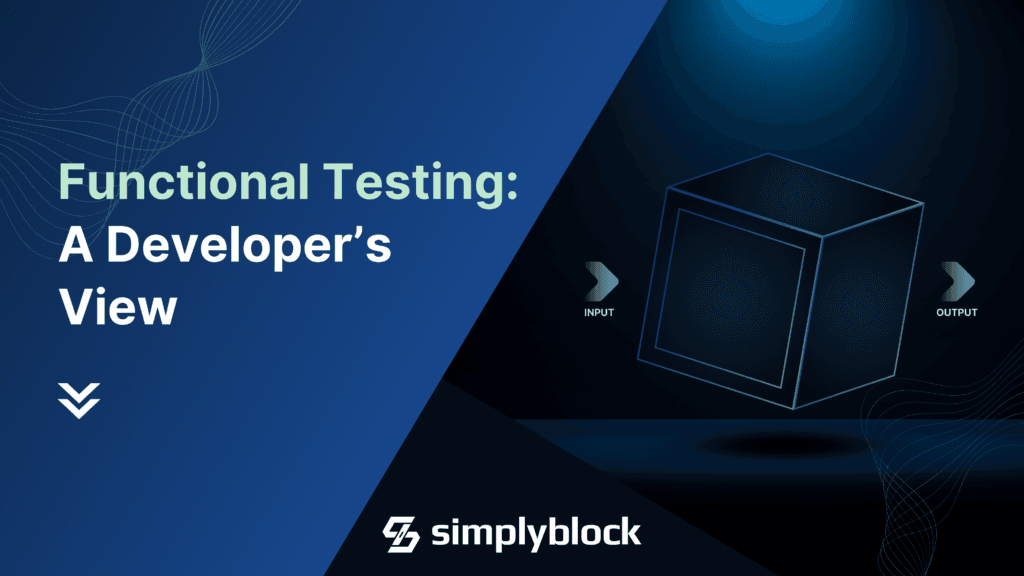Integration Tests Done Right: Testcontainers | Oleg Šelajev
Sep 06th, 2024 | 6 min read

Introduction:
This interview is part of the simplyblock Cloud Commute Podcast, available on Youtube , Spotify , iTunes/Apple Podcasts , and our show site .
In this episode of simplyblock’s Cloud Commute podcast, host Chris Engelbert interviews Oleg Šelajev, a Developer Advocate at Docker, about the intricacies of integration testing with Testcontainers. Oleg shares insights into how Testcontainers can simplify integration tests by providing on-demand, isolated, and production-like environments. The discussion highlights the power of Testcontainers in improving developer productivity and enhancing test reliability in Java projects and beyond.
Key Takeaways
What is Testcontainers, and how does it Work?
Testcontainers is an open-source library that provides APIs to manage containers programmatically. Oleg explains that Testcontainers allow developers to spin up and configure Docker containers directly from their code. This helps create isolated test environments, mimicking real-world production systems such as databases, message brokers, and external services.
How does Testcontainers Improve Integration Testing?
Testcontainers ensures that the environments used in testing are consistent with those in production. Developers can configure containers to run databases, Kafka, or other essential services, ensuring their tests closely reflect real-world conditions. Oleg emphasizes that Testcontainers make integration tests more reliable and portable across local development and CI pipelines by removing dependency on static infrastructure.
What Makes Testcontainers a better Solution for Integration Tests?
Testcontainers allows developers to create isolated and ephemeral environments for testing. As Oleg mentions, developers have full control over these environments, which they can break and reset as needed. This flexibility lets them test negative use cases, such as database schema failures, without affecting a shared testing environment. In addition to highlighting the key takeaways, it’s essential to provide deeper context and insights that enrich the listener’s understanding of the episode. By offering this added layer of information, we ensure that when you tune in, you’ll have a clearer grasp of the nuances behind the discussion. This approach enhances your engagement with the content and helps shed light on the reasoning and perspective behind the thoughtful questions posed by our host, Chris Engelbert. Ultimately, this allows for a more immersive and insightful listening experience.

In addition to highlighting the key takeaways, it’s essential to provide deeper context and insights that enrich the listener’s understanding of the episode. By offering this added layer of information, we ensure that when you tune in, you’ll have a clearer grasp of the nuances behind the discussion. This approach enhances your engagement with the content and helps shed light on the reasoning and perspective behind the thoughtful questions posed by our host, Chris Engelbert. Ultimately, this allows for a more immersive and insightful listening experience.
Key Learnings
What are Testcontainers, and why are they used in Integration Testing?
Testcontainers is a library that lets developers run Docker containers from their test code, allowing them to simulate databases, message brokers, and other services in isolated test environments. By using containers, developers can replicate production environments in their integration tests.
Simplyblock Insight:
Testcontainers work best with a reliable and scalable backend that supports the dynamic creation and destruction of containers. Simplyblock enhances the use of Testcontainers by providing high-performance storage, ensuring containerized environments spin up and operate efficiently, even during intensive testing cycles. This makes sure your tests are not only fast but accurate, no matter how complex the environments. Especially for performance or regression testing.
How can Testcontainers be used in a Typical Java Project?
In Java projects, Testcontainers are easily integrated with frameworks like Spring Boot, Quarkus, and Micronaut. Developers can use them to configure isolated environments, such as databases or messaging systems, for their tests, ensuring that each test has its own clean and consistent environment.
Simplyblock Insight:
Testcontainers’ power in Java projects lies in its ability to replicate real-world services. With simplyblock’s high-availability infrastructure, you can ensure your containers stay performant and accessible, even as your test suite grows. Simplyblock’s elasticity allows developers to run concurrent tests across multiple containers, without the risk of resource contention or delays.
Why should Testcontainers be used in a Singleton Instance?
A singleton instance reuses the same Testcontainer across multiple test classes, reducing the time spent spinning up new environments for each test. This dramatically improves test performance by allowing multiple tests to share a common setup.
Simplyblock Insight:
Managing singleton instances effectively requires efficient resource handling. Simplyblock’s infrastructure ensures that your long-lived containers maintain top performance throughout extended test cycles. By reducing resource overhead and maximizing uptime, simplyblock helps you run singleton instances efficiently across both development and CI environments, ensuring faster, more consistent tests.
What are the Benefits of using Testcontainers in Integration Testing?
Testcontainers offer several key benefits: They mirror production environments, increasing test accuracy. They allow for easy setup and teardown of ephemeral environments. They ensure tests are consistent across development and CI environments.
Simplyblock Insight:
The true potential of Testcontainers is unlocked when paired with a robust cloud infrastructure. Simplyblock offers auto-scaling, fast provisioning, and isolated networking, ensuring that your Testcontainers spin up in production-grade environments every time. This means developers can trust their integration tests to reflect actual production conditions, improving confidence in their deployments.
Additional Nugget of Information
How is Cloud-native Development Shaping the Future of Testing?
Cloud-native development is transforming testing by making it easier to replicate production environments on-demand. With containerization and microservices architecture, developers can spin up fully isolated, scalable environments in the cloud. This allows teams to run integration tests with high fidelity to the production environment, even for complex applications.
Conclusion
If you’re a developer looking for reliable, production-like environments for integration testing, Oleg Šelajev’s discussion on Testcontainers highlights why this tool is a game-changer. By using Testcontainers, you can create fast, isolated, and highly configurable environments directly from your test code, ensuring that your integration tests accurately reflect real-world conditions. Paired with simplyblock’s scalable, high-performance cloud infrastructure, Testcontainers can take your testing process to the next level, offering seamless resource provisioning and lightning-fast container execution.
The benefits are clear: better developer productivity, reliable test environments, and faster feedback loops in your CI pipelines. If you’re ready to make your integration testing smoother and more robust, Testcontainers, supported by simplyblock, is the way forward.
Be sure to tune in to future episodes of the Cloud Commute podcast for more expert discussions like this one!



